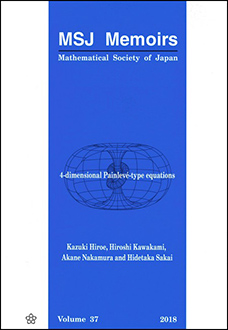Abstract
We are now going to construct the moduli spaces of stable sheaves. If we have a bounded family of stable sheaves, it can be parameterized by an open subscheme of a Quot-scheme on which a reductive group scheme acts. Two points of the subscheme correspond to the same sheaf if and only if they are in the same orbit of the group scheme action. Thus main part of the construction is to prove the existence of a quotient scheme of the scheme by the group scheme. Once we can overcome this difficulty, the universality of the moduli space is easily derived from that of the Quot-scheme and the quotient.
In the first section we shall recall a proof of the representability of the Quotfunctors. We shall recall the results in Geometric Invariant Theory that are relevant to our aim. The most of results are only stated without proof and the author refers the readers to the famous "Geometric Invariant Theory" by D. Mumford and Seshadri's work [Se]. After the study of rather technical notion of e-stability, the proof of a fundamental lemma to connect semi-stable sheaves with semi-stable points in Geometric Invariant Theory and the preparation of the general setting, we are going to construct moduli space of stable-sheaves. To compactify the moduli spaces we have to add points corresponding to the $S$-equivalence classes of semistable sheaves. The case over a filed of characteristic zero is treated in the sixth section along a beautiful idea of Simpson. To handle semi-stable sheaves in the general cases, we need a detailed analysis of closed orbits of a Grassmann type scheme. The seventh section is devoted to this analysis. A proof of the existence of moduli spaces in general cases will be given in the last section.
Information
Digital Object Identifier: 10.2969/msjmemoirs/03301C030


